Coffee Blog
The Art and Science of Coffee Cupping: A Professional’s Guide to Tasting

In a quiet, focused room, the only sound is a series of rapid, purposeful slurps. Rows of small bowls steam on a table, surrounded by professionals wielding spoons and deep concentration. This isn’t a strange culinary ritual; it is the world of coffee cupping, the universal language of coffee evaluation and the most critical tool for understanding the true story in every bean.
For coffee growers, buyers, roasters, and baristas, cupping is the essential practice for assessing quality, identifying flaws, and celebrating the incredible spectrum of flavors that coffee can offer. But you don’t need a white lab coat to participate. Cupping is, at its heart, a structured way to taste and compare coffee, and it is the single greatest method for anyone to deepen their appreciation for this complex beverage.
This is your guide to moving beyond simply drinking coffee and beginning to truly understand it.
What is Coffee Cupping? The Industry’s Gold Standard
Coffee cupping, also known as cup tasting, is the practice of observing the tastes and aromas of brewed coffee. It is the coffee industry’s equivalent to a wine tasting, designed to eliminate as many variables as possible—like brewing method and equipment—to evaluate the coffee beans themselves on a level playing field.
The process is standardized across the globe, governed by protocols from the Specialty Coffee Association (SCA). This allows a farmer in Colombia, an importer in Norway, and a roaster in Australia to all taste the same sample and discuss it using a common language and scoring system. They are evaluating the raw potential of the bean, searching for virtues like clarity, sweetness, and complexity, and flaws like off-notes or taints.
For the everyday enthusiast, it’s a fascinating exercise that trains your palate, reveals the impact of origin and roast, and forever changes the way you experience your morning cup.
The Cupping Ritual: A Step-by-Step Breakdown
The ceremony of cupping is precise for a reason: consistency leads to accurate evaluation. Here’s how professionals do it.
1. The Setup:
-
Cups: Typically 5-6 identical bowls or large cups are used for each coffee sample. Using multiple cups per coffee ensures consistency and confirms the findings.
-
Coffee: Beans are roasted lightly to medium (to prevent roast character from overshadowing the bean’s innate flavors), ground to a standard coarseness (similar to sea salt), and portioned precisely—usually 8.25 grams of coffee per 150 ml of water.
-
Water: Fresh, clean water just off the boil (around 200°F or 93°C) is used.
2. The Smell: The Dry Fragrance
Before water is added, cuppers deeply inhale the aroma of the dry grounds. This first sniff offers initial clues about the coffee’s character—notes of nuts, chocolate, flowers, or fruit often emerge. This is the coffee’s first introduction.
3. The Pour and The Steep
Hot water is poured directly onto the grounds in each cup, saturating them completely. A timer is set for 4 minutes. As the coffee steeps, a crust of grounds forms on the surface. This is another opportunity for aroma assessment, known as evaluating the “wet crust.” The cupper breaks this crust by placing their nose close to the cup and pushing the grounds back with a spoon with a swift, stirring motion. This releases a burst of intense aroma—often where the most vibrant notes of berries, citrus, or spices are detected.
4. The Slurp: The Art of Tasting
After the crust is broken and the grounds are skimmed from the surface, the coffee is allowed to cool. Contrary to popular belief, coffee is best tasted when it’s no longer scalding hot. As it cools, new flavors emerge and evolve.
Now comes the signature move: the slurp. Using a deep, round spoon, the cupper takes a sample of coffee and aspirates it—slurping it vigorously and aerating it across the entire palate. This isn’t for show. This forceful slurp sprays the coffee as a fine mist over the tongue, engaging all taste buds and sending aromas retro-nasally to the olfactory bulb, which is responsible for the vast majority of our flavor perception. It’s the difference between smelling a perfume in the air and having it be sprayed directly onto your skin; the intensity and clarity are unmatched.
After slurping, the coffee is spit out into a spittoon. This allows the taster to evaluate dozens of samples without becoming overcaffeinated and jittery, which would impair their judgment. A master cupper might taste 200-300 cups in a single day, relying on this technique to maintain a sharp and consistent palate.
The Language of Flavor: What Are You Actually Tasting For?
A professional cupping session evaluates coffee based on a strict scoresheet, but the core attributes anyone can learn to identify are:
-
Fragrance/Aroma: The smell of the dry grounds and the wet crust.
-
Flavor: The most important category. What does the coffee taste like? This is where descriptors like “berry,” “chocolate,” “citrus,” or “nutty” come into play.
-
Aftertaste: The length and pleasantness of the flavor that remains on the palate after the coffee is spit out.
-
Acidity: Not sourness, but a bright, sparkling, palate-cleansing quality that gives coffee its liveliness (think of the acidity in a crisp apple or a lemonade). It can be described as “citric,” “malic,” or “tartaric.”
-
Body: The weight, thickness, and texture of the coffee felt in the mouth. Is it light and tea-like? Or heavy and syrupy, like whole milk?
-
Balance: How all the different attributes—sweetness, acidity, and body—work together in harmony.
Why You Should Try Cupping at Home
You don’t need a professional lab to host your own cupping. It’s an incredible way to become an active participant in your coffee experience.
How to Host a Home Cupping:
-
Select 2-3 Coffees: Choose coffees with different origins (e.g., an Ethiopian, a Guatemalan, and a Sumatran) to taste the dramatic impact of terroir.
-
Grind Fresh: Grind each coffee to a coarse setting just before you begin.
-
Smell and Compare: Sniff the dry grounds of each. Note the differences.
-
Pour Hot Water: Use a kettle and pour water over each bowl. Set a timer for 4 minutes.
-
Break the Crust: At 4 minutes, get your nose right over the first cup, break the crust, and inhale deeply. Note the powerful aromas. Skim the grounds from the surface.
-
Taste and Discuss: Once the coffee has cooled slightly, start slurping. Don’t be shy! Spit it out. Talk about what you taste. There are no wrong answers. Use simple comparisons: “This one tastes more like dark chocolate,” or “This one has a brighter, fruitier taste.”
Many people are surprised to discover how distinct each coffee is when tasted side-by-side. Start by exploring broad categories: does it taste nutty or fruity? As you practice, you can drill down into more specific notes.
The Human Element: A Lifelong Pursuit of Flavor
Becoming an expert cupper is a lifelong endeavor. It requires building a vast “mental flavor library,” a sensory database built over thousands of tastings. A master taster isn’t just identifying “berry”; they’re distinguishing between a dried cranberry, a fresh raspberry, and a jammy strawberry. They can pinpoint a defect and trace it back to a problem in processing, transport, or roasting.
This level of expertise highlights a beautiful truth about coffee: it is a living product. Its flavor is a fragile chain affected by weather, soil, cultivar, processing, roasting, and brewing. As one seasoned cupper noted, “The flavour can go wrong at so many points before the coffee’s in the cup.” Cupping is the practice of listening to that story, from seed to cup, and appreciating the journey.
Your Palate Awaits
Coffee cupping demystifies the complex world of coffee tasting. It transforms it from an abstract concept—where tasting notes on a bag seem like imagination—into a tangible, structured, and deeply enjoyable experience. It proves that the flavors of blueberry, jasmine, or caramel aren’t marketing hyperbole; they are real, discernible characteristics waiting to be discovered.
So, gather some cups, some coffee, and a friend. Embrace the slurp. You are not just drinking coffee; you are embarking on a journey of sensory discovery, one spoonful at a time.



 Bee Mugs
Bee Mugs Bird Mugs
Bird Mugs Bunny Mugs
Bunny Mugs Cat Mugs
Cat Mugs Goat Mugs
Goat Mugs Horse Mugs
Horse Mugs Lion Mugs
Lion Mugs Monkey Mugs
Monkey Mugs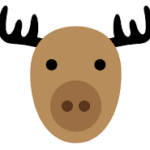 Moose Mugs
Moose Mugs Owl Mugs
Owl Mugs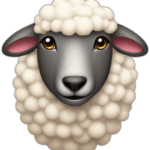 Sheep Mugs
Sheep Mugs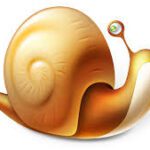 Snail Mugs
Snail Mugs Turtle Mugs
Turtle Mugs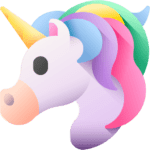 Unicorn Mugs
Unicorn Mugs
 Engagement Mugs
Engagement Mugs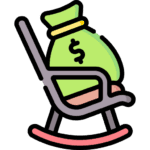 Retirement Mugs
Retirement Mugs St Patrick’s Day Mugs
St Patrick’s Day Mugs Thank You Mugs
Thank You Mugs
 Boss Mugs
Boss Mugs Christmas Mugs
Christmas Mugs Colleague Mugs
Colleague Mugs Dad Mugs
Dad Mugs Grandad Mugs
Grandad Mugs Grandma Mugs
Grandma Mugs Husband Mugs
Husband Mugs Lawyer Mugs
Lawyer Mugs Nurse Mugs
Nurse Mugs Sarcastic Mugs
Sarcastic Mugs Uncle Mugs
Uncle Mugs Wife Mugs
Wife Mugs
 Fourth of July Mugs
Fourth of July Mugs Halloween Mugs
Halloween Mugs Thanksgiving Mugs
Thanksgiving Mugs Valentines Day Mugs
Valentines Day Mugs
 Amsterdam Mugs
Amsterdam Mugs Barcelona Mugs
Barcelona Mugs Berlin Mugs
Berlin Mugs Chicago Mugs
Chicago Mugs Dubai Mugs
Dubai Mugs London Mugs
London Mugs Paris Mugs
Paris Mugs Rome Mugs
Rome Mugs Sydney Mugs
Sydney Mugs Tokyo Mugs
Tokyo Mugs Toronto Mugs
Toronto Mugs
 Aunt Mugs
Aunt Mugs Boss Mugs
Boss Mugs Boyfriend Mugs
Boyfriend Mugs Co-Worker Mugs
Co-Worker Mugs Couples Mugs
Couples Mugs Gamer Mugs
Gamer Mugs Girlfriend Mugs
Girlfriend Mugs Nanny Mugs
Nanny Mugs Sister Mugs
Sister Mugs Teachers Mug
Teachers Mug
 Baseball Mugs
Baseball Mugs Fishing Mugs
Fishing Mugs Football Mugs
Football Mugs Golf Mugs
Golf Mugs Rugby Mugs
Rugby Mugs Soccer Mugs
Soccer Mugs Tennis Mugs
Tennis Mugs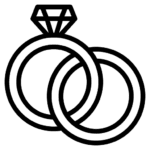
 Best Man Mugs
Best Man Mugs Bridesmaids Mugs
Bridesmaids Mugs Father of the Bride Mugs
Father of the Bride Mugs Groomsmen Mugs
Groomsmen Mugs Matron of Honor Mugs
Matron of Honor Mugs
 Inspirational Mugs
Inspirational Mugs Offensive Mugs
Offensive Mugs Sexy Mugs
Sexy Mugs